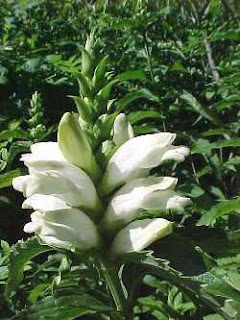Fall is almost here! I can’t believe how fast the summer went by. For those of you who like to garden, here are some plants, including perennials, shrubs, and a few trees that that will show their color in the fall, some with flowers, and others with foliage.
Please make sure to check the list of invasive plants in your area before planting any of these. One site that lets you do this is: http://www.invasivespeciesinfo.gov/plants/main.shtml. You can also check with your local Cooperative Extension Office, . http://www.csrees.usda.gov/Extension/.
All pictures are taken from Missouri Botanical Garden's Kemper Center for Home Gardening (Plant Finder).
1. Eurpatorium (white snakeroot): Zones 3-8; white blooms from September through frost; 3-5’ tall.
2. Zinnia augustifolia (creeping zinnia): annual; zones 2-11; orange, yellow, white, pink, or red blooms from June to frost; ; 8-16” tall.
3. Tagetes patula (French marigold): annual; zones 2-11; yellow, orange, red, and bicolor blooms from June to frost; 6-12” tall.
4. Tithonia rotundifolia (Mexican sunflower): annual; zones 2-11; blooms in orange-red, with a yellow center from July to September; 4-6’ tall.
5. Brachyscome (Swan river daisy): annual; zones 2-11; lavender, violet, blue, yellow, or white blooms, with yellow to black centers, from May to frost; 12-18” tall.
6. Lobelia siphilitica (blue cardinal flower): perennial; zones 4-9; blue blooms from July to September; 2-3’ tall.
7. Celosia argentea var. cristata (cockscomb): annual; zones 2-11; orange, red, purple, yellow, or pink blooms from June to September; size varies.
8. Aster ‘Wood’s Purple’ (Aster): perennial; zones 4-8; blue-violet to purple blooms in August to September; 12-18” tall.
9. Caryopteris x clandonensis ‘Arthur Simmonds’ (bluebeard): deciduous shrub; zones 5-9; blue blooms from July to September; 2-3’ tall.
10. Chelone glabra (turtlehead): herbaceous perennial; zones 3-8; blooms white with a pink tinge from August to October; 2-3’ tall.
11. Chrysanthemum ‘Jessica’ (chrysanthemum): perennial; zones 5-9; blooms in bright yellow from September to frost; 1 ½ - 2’ tall.
12. Helenium ‘Moorheim Beauty’ (sneezeweed): perennial; zones 3-8; blooms in a bronze-red color from August to October; 2-3’ tall; NOTE: Despite its common name, it does not cause allergies; it is ragweed, which blooms about the same time, that can trigger allergies.
13. Helianthus salicifolius ‘Low Down’ (willow-leaved sunflower): perennial; zones 6-9; flowers have yellow rays with brown centers, and bloom from September to October; 8-12” tall.
14. Heliopsis helianthoides ‘Prairie Sunset’ (false sunflower): perennial; zones 3-9; yellow rays with maroon center and maroon tinting on the rays, and it blooms from June to September; 3-5’ tall,
15. Solidago caesia (blue stem goldenrod): perennial; zones 4-8; yellow blooms from August to September; 1 ½ - 3’ tall.
16. Perovskia atriplicifolia (russian sage): perennial; zones 5-9; lavender-blue blooms from
July to October; 3-5’ tall.
17. Anemone hupehensis (Japanese anemone): perennial; zones 4-8; pink blooms in August to September; 1 ½ - 2’ tall.
18. Calamagrostis x acutiflora ‘Karl Foerster’ (feather reed grass): ornamental grass; zones 5-9; foliage changes from green to tan in the fall; 3-5’ tall; provides winter interest if not cut back.
19. Miscanthus sinensis ‘Adagio’(eulalia): ornamental grass; zones 5-9; the silver-gray blades turn yellow in fall; plumes are pink, and turn to white as they mature from late August through fall; 3-4’ tall; provides winter interest if not cut back.
20. Molinia caerulea (purple moor grass): ornamental grass; zones 5-8; blue-green foliage turns golden to orange-yellow in the fall; no winter interest.
21. Panicum virgatum ‘Cheyenne Sky’ (switchgrass): ornamental grass; zones 5-9; flower panicles turn burgundy-red in late summer; 2-3’ tall; winter interest if not cut back.
22. Euonymus alatus ‘Compactus’ (dwarf-winged burning bush): deciduous shrub; zones 4-8; leaves turn bright red in the fall; 9-11’ tall.
23. Dahlia (Dahlia): bulb; zones 7-10 (but can be grown as an annual in other zones); red,
pink, lavender, purple, orange, yellow, or white blooms from July to September; 1-6’ tall.
24. Acer Palmatum ‘Katsura’ (Japanese maple): deciduous shrub; zones 5-9; leaves turn orange and yellow in the fall; 10-12’ tall.
25. Aronia melanocarpa ‘Autumn Magic’ (black chokeberry): deciduous shrub; zones 3-8; black berries in fall, along with purple-red leaves; 3-6’ tall.
26. Hylotelephium ‘Herbstfreude’
(stonecrop) (autumn joy sedum): perennial; zones 3-9; blooms from a rosy pink to a burgundy-red from September to October; 1 ½ - 2’ tall.
27. Sorghastrum nutans (Indian grass): ornamental grass; zones 4-9; flower panicles start as a brown color with yellow stamens, and turn to dark brown and bronze through the fall, and then fade to gray over the winter; 3-5’ tall; provides winter interest if not cut back.
28. Brassica oleracea (ornamental cabbage): annual; zones 2-11; color is provided by foliage in shades of white, cream, pink, rose, red, or purple that intensifies in the fall; 1 – 1 ½’ tall.





























No comments :
Post a Comment